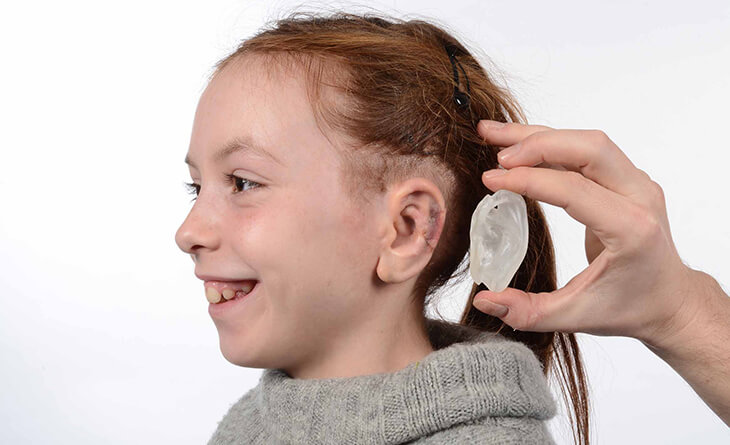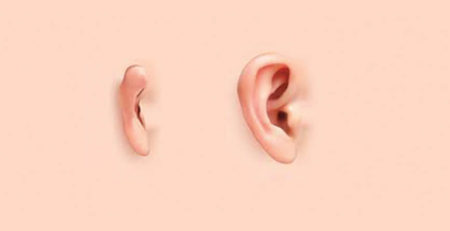Can You Fix the Microtia?
Are you tired of feeling self-conscious about your ear’s appearance? Do you dream of having symmetrical, natural-looking ears matching your unique personality? If you or someone you know is struggling with microtia, the solution you have been searching for may lie in the wonderful world of microtia surgery.
Microtia, a congenital condition where the outer ear is underdeveloped or absent, can significantly impact an individual’s self-esteem and confidence. But fear not, as advancements in medical science have paved the way for transformative solutions. This cutting-edge procedure designed to reconstruct the ear offers hope to those affected by this condition.
But what exactly does this surgery entail? How does it work, and what are the potential outcomes? Let’s find out!
What is Microtia?
Microtia is a congenital condition that affects the development of the external ear. It is characterised by an underdeveloped or malformed ear, which can range from mild deformities to complete absence of the ear. Microtia is typically present at birth and can occur unilaterally (affecting one ear) or bilaterally (affecting both ears).
Microtia can impact an individual’s life, including functional and aesthetic concerns. It can somewhat affect hearing ability, as the ear’s structure is closely related to sound transmission. Furthermore, microtia can have psychological and emotional effects, leading to self-consciousness, low self-esteem, and social challenges.
Based on the severity of the underdevelopment or absence of the external ear, plastic surgery specialists in Delhi classified microtia into four grades:
Grade I: In this grade, the external ear is smaller than usual but retains most of its normal structures, including the earlobe. The ear may have minor abnormalities in shape or size, but it is relatively well-formed.
Grade II: Grade II microtia involves more significant underdevelopment of the external ear. The ear is smaller and may be missing certain structures, such as the ear canal or outer ear parts. The earlobe may also be malformed or absent.
Grade III: The external ear is severely underdeveloped or absent in grade III. Only remnants of the ear may be present, and the middle and inner ear structures are also often affected. The ear canal is usually closed or narrow, leading to hearing difficulties, and it can be corrected with microtia surgery.
Grade IV: This is the most severe form of microtia where the external ear is completely absent and is often accompanied by a complete absence of the ear canal and the middle ear structures. Individuals with grade IV microtia may have profound hearing loss.

Have questions or want to get started? We are ready to help you with a smile!
Causes of Microtia
Microtia typically manifests during the early weeks of pregnancy, specifically in the first trimester. While the exact cause remains largely unknown, several factors have been associated with its development.
Some potential contributors include using certain medications like isotretinoin during pregnancy, genetic conditions or changes, environmental triggers, and a diet low in carbohydrates and folic acid. Drug or alcohol use during pregnancy can also contribute to Microtia.
Additionally, maternal diabetes before pregnancy has been observed as a potential risk factor. Mothers with diabetes appear to have a higher risk of giving birth to a baby with microtia than non-diabetic pregnant women.
While microtia is typically not inherited genetically, there are rare instances of hereditary cases. In these cases, the condition may skip generations. However, most microtia occurrences are sporadic, even appearing in one twin while the other remains unaffected.
Diagnosis of Microtia
Before undergoing the microtia surgery, a proper evaluation of the condition is required. Diagnosing microtia usually involves a combination of physical examination and diagnostic testing. Here are some common methods used to diagnose microtia:
Physical Examination: Your child’s paediatrician or ear, nose, and throat (ENT) specialist will thoroughly examine your child to assess the external ear and surrounding structures. He/She will observe the ear’s size, shape, and position, as well as any associated abnormalities or asymmetry.
Hearing Assessment: Since microtia can be associated with hearing loss, a hearing test may also be performed to assess the individual’s hearing ability. The hearing test can help determine the degree and type of hearing loss, which can guide treatment options. The doctor may prescribe microtia surgery based on the severity of the condition.
Imaging Tests: Sometimes, plastic surgery specialists in Delhi may prescribe Imaging techniques like computed tomography (CT) scans to visualise the internal structures of the ear, including the middle and inner ear.
Treatment for Microtia
Sometimes parents may not prefer surgical intervention for microtia, especially in cases of infants and wait until their child is older to undergo the procedure. Microtia surgery may be more successful for older children, as more cartilage may be available for grafting.
The treatment option depends on the severity of the condition. Nonsurgical hearing devices may be an option for some children with microtia, depending on the severity of the disease.
Rib Cartilage Ear Reconstruction
Rib cartilage ear reconstruction in Delhi is used to create a new ear for patients born with microtia or those who lost their ear due to trauma or disease. The procedure involves harvesting the patient’s own rib and using it to create a framework for the new ear.
Rib cartilage ear reconstruction in Delhi is typically performed under general anaesthesia and can take several hours to complete. The surgeon makes an incision in the patient’s chest to access the rib cartilage. They then remove a portion of the cartilage and carve it into the shape of an ear framework. The framework is then inserted under the skin on the side of the patient’s head where the ear is missing.
Over time, the skin and tissue grow around the framework, creating a new year. The new year is usually smaller than the patient’s unaffected ear and may not look the same. However, the procedure aims to create a symmetrical and natural-looking ear.
It is important to note that rib cartilage ear reconstruction in Delhi is a complex procedure; therefore, it should be performed by a skilled and experienced surgeon. You should also carefully review the benefits and side effects of the procedure and follow your surgeon’s instructions carefully.
Medpor Graft Surgery
Medpor graft surgery is a type of microtia surgery that involves using a synthetic implant made of porous polyethene, called Medpor, to create a framework for the new ear.
During the procedure, the plastic surgery specialist in Delhi makes a small incision behind the affected ear and carefully shapes and inserts the Medpor implant to recreate the missing or malformed ear structure. The implant provides a framework for the new ear and promotes tissue ingrowth, allowing the surrounding tissues to integrate with the implant over time.
One advantage of Medpor graft surgery is that it does not require the use of the patient’s own cartilage, such as rib cartilage, for reconstruction. This can be particularly beneficial for individuals with limited cartilage availability or who prefer not to undergo rib cartilage grafting.
After the surgery, you will need to wear a protective headband or dressing to support the newly reconstructed ear during the healing process. The healing and final results may take several months, and further surgeries may be needed to refine the shape and appearance of the ear if desired.
Prosthetic External Ear
A prosthetic external ear is an artificial ear made of silicone or other materials that are attached to the side of the head to create the appearance of a natural ear. This option is typically used for individuals who are not candidates for reconstructive surgery or who choose not to have microtia surgery.
The process of creating a prosthetic ear involves taking detailed measurements and impressions of the patient’s remaining ear, as well as the surrounding tissue and bone structure. A mould is then made from these impressions, and the prosthetic ear is created to match the patient’s remaining ear’s size, shape, and colour.
Certain individuals may have skin sensitivities that make it challenging to use medical-grade adhesives. Using surgically implanted anchor systems can also increase the risk of skin infections in children. However, an experienced plastic surgery specialist in Delhi can reduce these risks.
Surgically Implanted Hearing Devices
Surgically implanted hearing devices such as cochlear implants are advanced medical devices implanted within the ear or the skull to improve hearing in individuals with hearing loss due to microtia. These devices frequently require very minor healing at the insertion site. However, certain adverse effects may occur. These are some examples:
- Vertigo
- Leaking of the fluid that surrounds the brain
- Nerve damage or injury
- Tinnitus (ringing in the ear)
- Skin infection on the implant site
Final Words!
Microtia is a congenital condition that affects the ear’s development. While it can pose challenges for individuals with microtia, various treatment options, including surgical and nonsurgical interventions, are available.
If you or your child has microtia and you’re considering microtia surgery, consult with Dr Rajat Gupta, an experienced and qualified ear specialist. With his expertise in reconstructive surgery and other treatment modalities, he can help you understand the available options and guide you through decision-making.
Don’t let microtia hold you or your child back. Schedule a consultation with Dr Rajat Gupta today to learn more about your treatment options and take the first step toward achieving optimal ear function and appearance.
Dr. Rajat Gupta
MBBS, MS, DNB(Gen. Surg.),
DNB (Plastic Surgery)
Dr. Rajat Gupta is a board certified plastic surgeon in India with 13 years of experience to back his expertise in the domain of aesthetic surgeries.
Having completed his training from Maulana Azad Medical College and equipped with a thorough understanding of aesthetic needs of people, Dr. Gupta strives to offer the best remedies and cosmetic procedures outfitted with the latest technology to the aspirants in India and across the globe. To book an appointment, call: +91-9251711711 or email: contact@drrajatgupta.com









